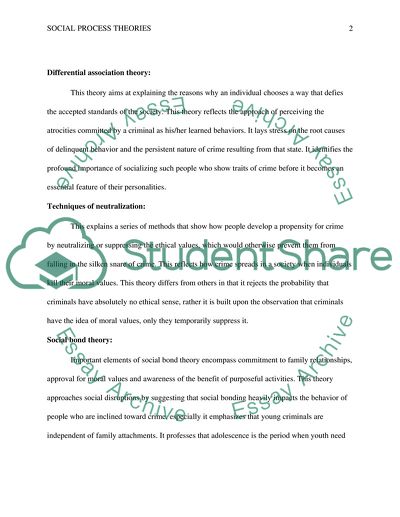Social Process Theories - Project Essay Example | Topics and Well Written Essays - 1000 words. Retrieved from https://studentshare.org/sociology/1571404-social-process-theories-project
Social Process Theories - Project Essay Example | Topics and Well Written Essays - 1000 Words. https://studentshare.org/sociology/1571404-social-process-theories-project.


